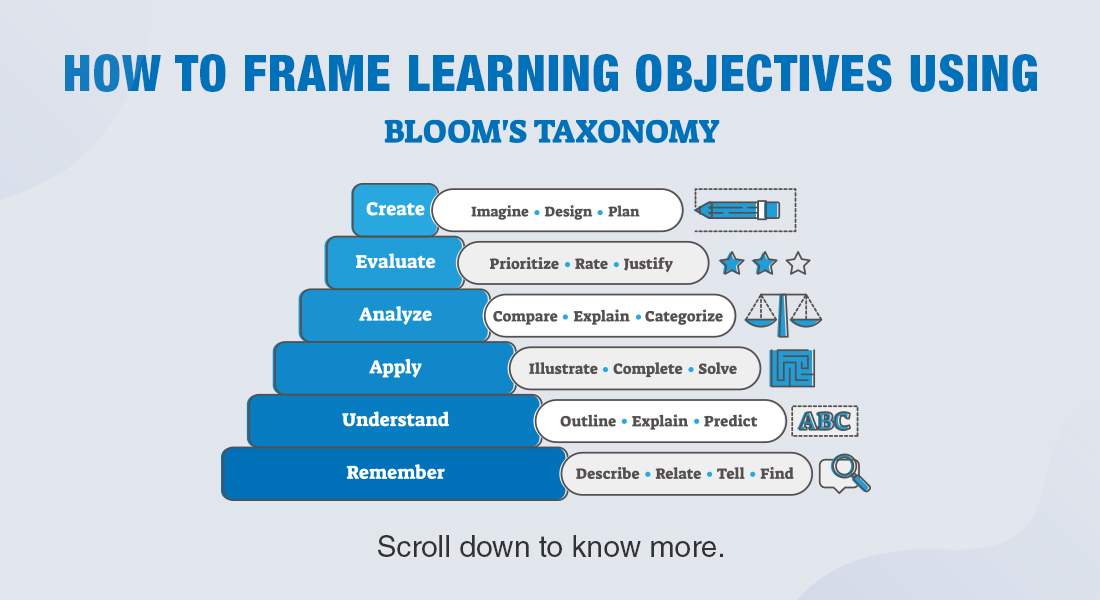Blooms Taxonomy: The Science of Learning Objectives – Part 3

In my earlier blogs, Learning Objectives – What They Are and Why You Need Them and The Science of Learning Objectives – Part 1 and Part 2, we have seen what learning objectives are and why they are important. We have also seen the first four levels of the cognitive domain of Bloom’s taxonomy, which provides the basis for describing the desired performance of the learner after completing the course, i.e. Remembering, Understanding, Applying and Analyzing levels. In this post, we will look at the next two levels viz. Evaluating and Creating.
Evaluating level
At this level, the learner must be able to make assessments about the information learned in the training program. Examples of learning objectives at this level are:
- The learner would be able to justify the expenditure incurred on the project.
- The learner would be able to evaluate the effectiveness of the two business processes.
The verbs used at this level of cognition include, but are not limited to the following.
- Judge
- Relate
- Weigh
- Criticize
- Support
- Evaluate
- Consider
- Critique
- Recommend
- Assess
- Appraise
- Summarize
- Compare
Creating Level
The learner, at this level, must be able to put together diverse elements to create a “new whole”. Examples of learning objectives at this level are:
- The learner would be able to design a new procedure to repair the fuel injection system.
- The learner would be able to develop a new solution to the problem of frequent power cuts.
The commonly-used verbs at this level are as follows.
- Compose
- Originate
- Hypothesize
- Develop
- Design
- Combine
- Construct
- Produce
- Plan
- Create
- Invent
- Organize
- Synthesize
- Draft
Let us now look at the examples of learning objectives of the following six trainings at the Evaluating and Creating levels with examples.
- Sales Process Training
- Product Training
- Service Technician Training
- Software Training
- Safety Training
- Social Media Policy Training
| Training | Example of learning objectives at Evaluating level | Example of learning objectives at Creating level |
| Sales Training | The learner would be able to evaluate the sales process for efficiency. | The learner must be able to develop a new sales process. |
| Product Training | The learner would be able to justify the price of the product. | The learner would be able to create a customized solution for the buyer. |
| Service Technician Training | The learner would be able to evaluate the reasons for frequent crash of the computer system. | The learner would be able to develop a new solution to the problem of frequent computer system crashes. |
| Software Training | The learner must be able to assess the impact of the procedure to create a purchase order on the organization’s Procure-to-Pay process. | The learner would be able to develop a quicker procedure to create a purchase order. |
| Safety Training | The learner would be able to evaluate the effectiveness of the safety procedure to prevent accidents. | The learner would be able to design a new safety procedure. |
| Social Media Policy Training | The learner would be able to assess the effectiveness of the social media policy. | The learner would be able to draft a new social media policy. |
Conclusion
At the Evaluating level of the cognitive domain, the learner would be able to evaluate the information acquired in the training program. And, at the Creating level, he would be able to synthesize this information effectively. In my next post, we will look at the Affective domain of Bloom’s taxonomy. So, stay tuned.





